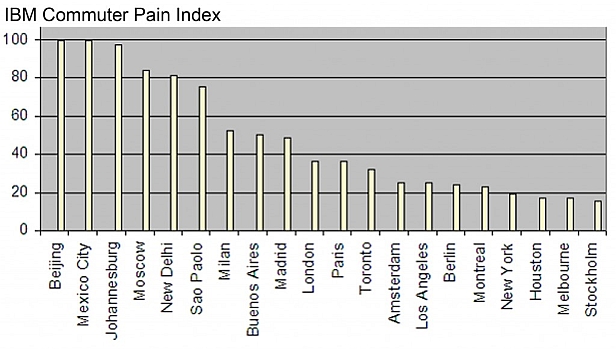Progress toward a sustainable future may be stalled in the Senate, but there’s a ton of news and interesting research happening at the local level on the broad topic of improving built spaces — cities, towns, buildings, transportation systems, etc. A quick roundup from the local solutions beat:
 Living-PlanIT.comPlanIT Valley: Portugal’s planning to build a new green city and tech innovation center (“a new Silicon Valley”) from the ground up, with the help of networking giant Cisco. The $10 billion project is designed to hold 225,000 people and produce “negligible” greenhouse gas emissions with the help of ubiquitous smart grid technology. And yes, planned cities like “PlanIT Valley” have a terrible track record, so it makes sense to be skeptical. The best way to understand PlanIT Valley, oddly enough, is to read about a totally different Cisco city, South Korea’s New Songdo, in Greg Lindsey’s excellent Fast Company story from February.
Living-PlanIT.comPlanIT Valley: Portugal’s planning to build a new green city and tech innovation center (“a new Silicon Valley”) from the ground up, with the help of networking giant Cisco. The $10 billion project is designed to hold 225,000 people and produce “negligible” greenhouse gas emissions with the help of ubiquitous smart grid technology. And yes, planned cities like “PlanIT Valley” have a terrible track record, so it makes sense to be skeptical. The best way to understand PlanIT Valley, oddly enough, is to read about a totally different Cisco city, South Korea’s New Songdo, in Greg Lindsey’s excellent Fast Company story from February.
Los Angeles invests in transit-oriented development, breaking ground on a $690 million, 11.3-mile light-rail extension that planners hope will inspire compact development.
“There’s something about rail that creates an anchor for economic development,” Michael Cano, county transportation deputy, tells the L.A. Times.
In Seattle, Amazon gets slammed for its hulking, monolithic new headquarters:
Architecturally, in a word: ugh.
Amazon.com is an international icon, a world-renowned success story of the Internet Age. Given Amazon’s stature and wealth, one might expect a world HQ design that was daring, or fun, or unconventional in some inspiring, creative way. Or at least better than the typical sterile office towers that litter U.S. cities from Phoenix to Charlotte and everywhere in between.
Over at Worldchanging, Alex Steffen explores the impact of the Chinese city-building boom and brings the optimism:
Is a bright green China even possible? Perhaps more possible than we usually think. Many people in the U.S. and Europe start from the assumption that China will behave in the future as it did in the past: slap up sprawling cities of shoddy, inefficient buildings, powered by dirty coal and driven economically by toxic manufacturing. But there are signs that China is already beginning to embrace a different path forward, perhaps preparing to embrace the idea that a climate-friendly economy is the key to its future prosperity.
On the research front, the Center for Neighborhood Technology quantifies what we’ve long known: Compact urban development is green development because it keeps people out of cars. From its new study, “Transit-Oriented Development & Climate Change: The Symbiosis“:
By living in a central city near transit, the average household can reduce its transportation-related greenhouse gas emissions by 43 percent. The number increases when living near the most location efficient transit zones, which can result in a 78 percent emission reduction.
And IBM calculates “commuter pain” — an aggregate of commuting time, stuck-in-traffic time, and driving-caused stress — in 20 major cities. Turns out Los Angeles isn’t the king of gridlock — Beijing, Mexico City, and Johannesburg have it much worse. Here’s the graphic (which is surprisingly low-fi for IBM):
 IBM
IBM
After breaking an ankle, Sightline research fellow Roger Valdez learns firsthand about an often-overlooked transportation measure: access for the disabled. He discovers:
The obstacles for a disabled person using a walker, wheel chair, or cane are pretty obvious: high curbs, lack of ramps, and poorly placed street furniture-benches, planters, and kiosks. The typical solutions are also obvious: places to rest or sit, intervals between posts and signage, appropriate width and passing space, and the elimination of protruding objects and steep edges. Taking a trip on crutches, these were the kinds of things that I really began noticing all over my neighborhood. Even a subtle difference in the grade of a staircase could be the difference between mild and major exertion.



